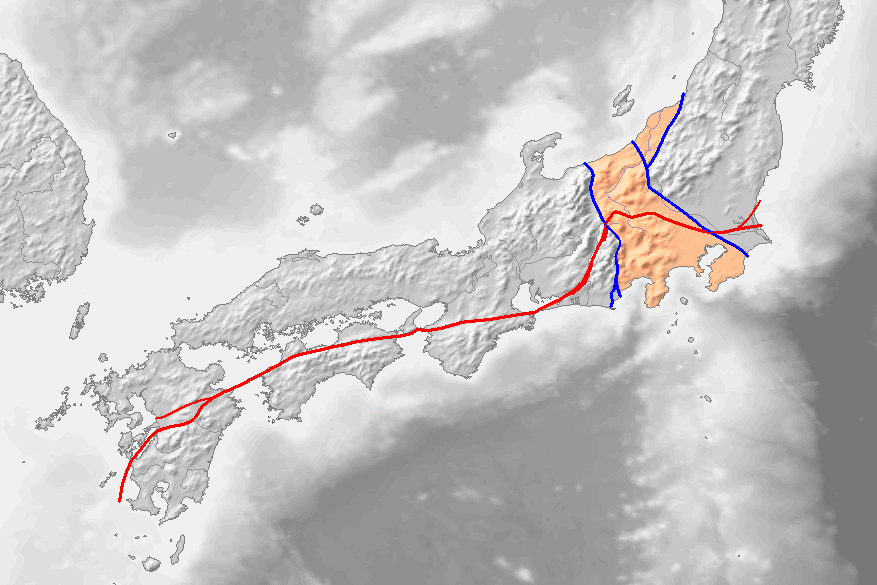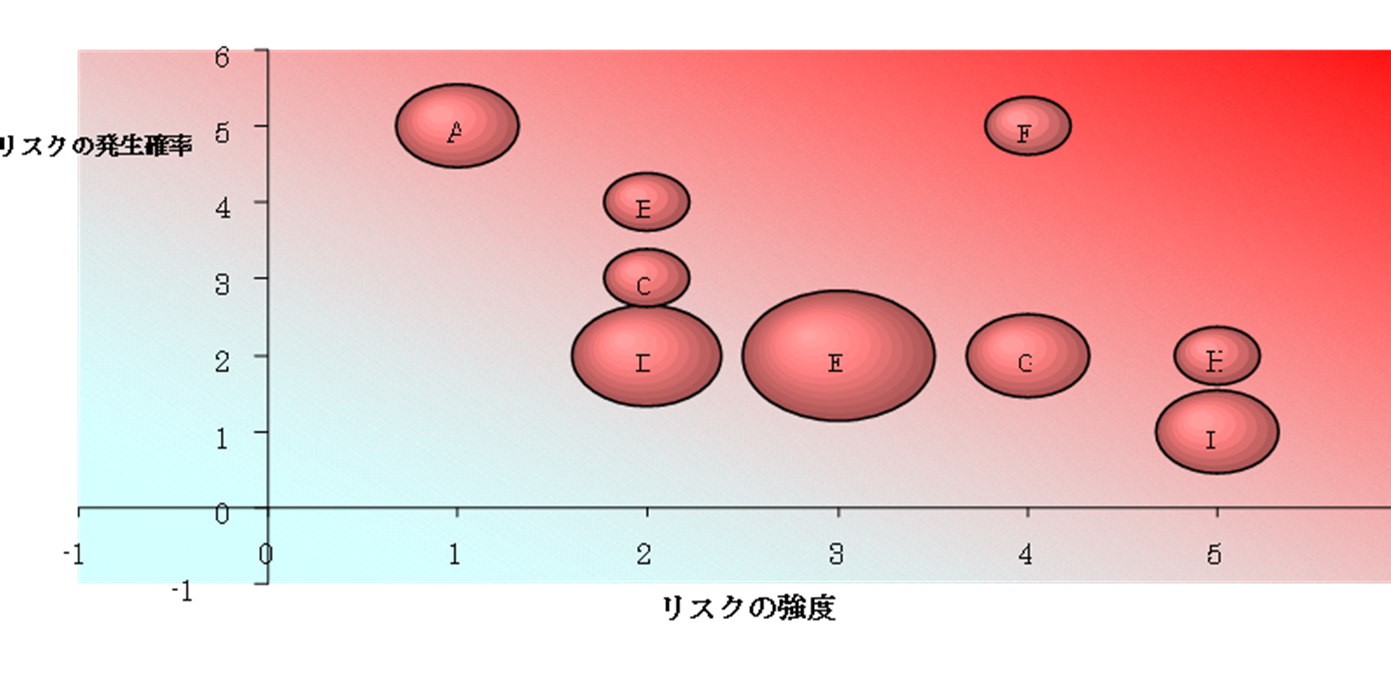キャプティブ 2023.02.15
CA48 伝承が教える「キャプティブの必要性」
目次
Copyright © Shinichiro Hatani 2023 All rights reserved
For those who prefer to read this column in English, the Japanese text is followed by a British English translation, so please scroll down to the bottom of the Japanese text.

本年2023年8月の「ブダペスト世界陸上選手権」その男子代表選考会を兼ねた第71回別府大分毎日マラソンが2月5日に行われた。日本陸上競技連盟は、「2時間07分39秒」の派遣設定記録を設定、また2024年パリ・オリンピックの出場権を争う本年10月開催予定のマラソングランドチャンピオンシップ(MGC)につながる重要な大会でもあった。
結果は、海外招待選手のイブラヒム・ハッサン(ジブチ)が2時間6分43秒の大会新記録で初優勝。2位はダニエル・キプチュンバ(ケニア)。市山翼が2時間7分44秒で日本人最上位の3位に入った。さらに青山学院大4年の横田俊吾が2時間7分47秒で4位、日本学生記録を20年ぶりに更新し、MGCの出場権も獲得した。
この舞台となった大分県は、日本有数の「温泉県」としても有名である。温泉の源泉数・湧出量は日本一である。大分県から熊本県に掛けて、別府温泉、湯布院温泉と有名な温泉地が連なっている。
この温泉地熱現象には火山活動や地震の鼓動を感じさせる、そんな地域でもある。
1.「瓜生島」と「久光島」の海没
筆者がこの世に生を受けた大分市。国家公務員となった父の仕事の転勤のため3歳でその地を離れた。その後、北海道、山口県、福岡県、岐阜県と転々としたが、やはり先祖伝来の「出生地」は何かと気になるものである。
「大分県別府市の本籍」を動かさなかった父。父が鬼籍に入った後も、「父への想い」からか、家族からは「面倒だから動かしたら」と言われても筆者も本籍地を動かしていない。そんな故郷大分に関する伝承を記した本に、一夜にして海没した島のことを記した「南蛮船の見える町―わがバテレン・宗麟・瓜生島 加藤 知弘 (著) 石風社(刊)」がある。
大分県の山沿い、温泉で有名な湯布院に源を発し大分市内を流れ別府湾に注ぐ河に大分川がある。この河口と砂州で繋がった島に「瓜生島」と「久光島」があったが、この2島が、1596年9月発生した「慶長豊後地震」で、一夜にして海に沈み、島の住人の多くが犠牲になった伝説が綴られている本である。
同書の出版社「石風社」の公式WEBサイトにある「紹介」には以下のように記されている。
バテレンと宗麟が築いた国際貿易都市、豊後府内。海に沈んだ「瓜生島」の調査に生涯を賭し、世界史的視野で豊後史を見つめ続けた一歴史学者の、四半世紀にわたる探究の旅の軌跡
2.海没リスクを発生させた正体
グローバル・リンクは、「キャプティブ」、とりわけ「地震保険キャプティブ」の設立コンサルティングを事業の柱としていることもあり、この伝承を発生させたリスクの正体が気になり調べてみた。
日本列島、その「土台」であるプレートは、中部地方から関東地方にかけての「プレートの境界線『大地溝帯』」であるフォッサマグナによって、西半分は「ユーラシアプレート」、北海道を含めた東半分は「北米プレート」に別れている。

出典:ウィキメディア・コモンズ (Wikimedia Commons)
上図には、関東から九州に伸びる「赤いライン」が記されている。断層の大規模な動きによって、断層の両側に違う岩石が並び、異なる地質の境界線になっている断層を「構造線」と呼ぶが、この赤いラインは、九州の八代から、徳島、三重、そして諏訪を経て、茨城から太平洋へ抜ける、1000Km以上もある長大な「構造線」であり、日本の背骨、「中央構造線」と呼ばれるものである。
この赤い線「中央構造線」が大分県を横断、その先は2016年4月16日熊本地方に震度7を記録したマグニチュード7.3の大地震、熊本地震が起きた熊本を経て太平洋へ抜けていることが確認できる。
九州、大分県から熊本県に至る一帯を走る中央構造線上には、別府温泉、湯布院と有名な温泉地がある。この温泉地熱現象にはその源である新しい火山活動や地震のリスクを感じさせる。
3.キャプティブが果たす役割
このような、地震リスクを始めとした諸々のリスクに対応する手段がリスクマネジメントである。
本来は、企業の事業目的の達成を妨げる阻害要因や不確実性を排除・制限するための企業戦略であるが、「損害保険会社が『医師賠償責任保険の収益を改善させるために顧客に勧奨した』ことが日本への導入の経緯」という点から、ともすれば日本では「リスクマネジメント=損害防止軽減活動」と理解されてきた。
しかし、リスクマネジメントは、単なる「損害防止軽減活動」ではなく、企業・団体・組織等が抱える多くのリスクを洗出し、それらリスクの大きさを算定・分析して、「リスク対応策」の策定・実施をおこなっていくものである。
そのためには、リスクの大きさを、影響度合いを明確に把握できる仕組みを「自社内」につくり、それらのリスクに対して「保険を含めてどのような対応策を取れるか、取っているか」を定期的に明確にしておくことが重要である。
「保険を損害保険会社に掛ける行為」は、「自社からリスクを外に出しているため、リスクヘッジ(リスクの軽減・削除)」と理解され「リスクを消し去ることができた」と考えられている。
しかし、保険証券にも、損害保険会社が補償しない事項が「免責」として明確に記されている。また、「保険金額」という「補償の金額上の制限」も存在する。
このように、保険を掛けても単純に消しさることができないリスクを含め、自社の内包する、また遭遇する可能性のあるリスクを自社内で明確かつ継続的に把握する仕組みが必要であり、「キャプティブ(自社専用保険会社)を中心としたキャプティブ・プログラム」がその役割を果たしていくことができると理解される。

4.キャプティブ設立の目的
「リスクの性質から保険にリスク移転したほうがいいと考えられるリスク=地震リスク等、発生頻度は低いが、発生すると甚大な損害を被る可能性が高いリスク」に関して、日本の損害保険会社では提供が困難とされる補償額を超え、企業が必要とするに足る十分な補償額、また広範な補償範囲を確保するための手段としてキャプティブは必須の存在と欧米では一般的に考えられている。
キャプティブは自社のリスクを引受ける「自社専用保険会社」であることから、「保険を掛ける=外部の損害保険会社へのリスクヘッジ」という視点ではなく、「キャプティブ(=企業)が損害を被らないように」と全社が努めていく方向に進んでいくことを促す働きがあるため、企業内に「高度のリスクマネジメント態勢」を構築することもできる。
さらに、再保険会社を海外に自社が有することによって、海外の再保険市場に直接アクセスことが可能となり、不足している補償額を十分に得る手段としての機能が期待されているものである。
地震保険ではリスクの集積からか日本の損害保険会社が提示する地震保険料は海外の世界的な保険会社(再保険会社)が提示する保険料に比べてかなり高いという事実をグローバル・リンクでは確認してきた。
日本の損害保険会社の地震保険料の概ね3分の1程度の保険料で、「同じリスクを同じ条件で世界的な信用のある再保険会社が引受けている実績」がグローバル・リンクが設立をサポートしたキャプティブでは存在している。つまり、その保険料の3分の2は、「内外価格差」となり、キャプティブ運営のコストを除いた大半の保険料は、再保険会社であるキャプティブの収益となるのである。
大分県は「地震が起きやすい地」とは一般的には見られていないが、「中央構造線」沿いであるため非常に多くの断層が存在する。このように「リスク(=危険性)」は見えないから「リスク」と呼ばれているものである。それらが顕在化して損害となる前に対処しなければならない、事前の策が肝要である、それは当然経営の責務となる。
今回のまとめ
現在の別府湾に島影は全くない。別府湾に面する大分平野は、「地殻変動」が起きやすい場所であり、かつ「地盤の弱い地域」ということもあって、「瓜生島沈没」の伝説があると言われている。
この「瓜生島」を大分川が堆積させた大量の土砂が形成した「砂州」と考える研究者もいる。そう考えると、地震によって軟弱な地盤に「液状化現象」が起こり「『島』が土砂の中に埋没していった」と考えることができる。
このような「陸地の沈没」が考えられる地域は全国各地に存在する。日本は、国土の四分の三が山地であり、 山地は谷が細かく入り組み、その斜面は急傾斜となった「段丘」が多くの地で見られるからである。懸念されている「南海トラフ巨大地震」が発生した場合、その影響を受ける地域では建物の揺れによる倒壊だけではなく、「東日本大震災」の際、東京湾沿岸を中心に液状化に依る被害が広く発生したように、「大規模な液状化現象」が起きる可能性が非常に高い。
液状化は、堆積した砂の地盤が、干拓地等で水を多く含んでいる場所で起こり、埋没しないまでも、工場が傾くと収容、装備されている重量物である機械類も傾く、そうなると生産が長期間不可能になり、企業収益に大きなマイナスの影響を与えるのは必至である。
「地震リスク」と言うと多くの人が「建物が倒壊する、壊れるリスク」を考えるが、建物は土台さえしっかりしていればその復興に要する時間は短いものである、しかし「地盤の整備、強化」からおこなっていかなければならない「液状化リスク」は復興までの期間が長期化して、企業の収益に与える影響が実は遙かに大きいものである。
ただ、日本では「地震保険=物的損害リスクへの補償」と見なされてきたため、損害保険会社が、この「事業の中断による収益低下リスク」(英文では「Business Interruption(ビジネス・インタラプション):BI」を引き受けることは一般的ではない。ただでさえ不足がちな「地震保険キャパシティ(引受力)」を広範なリスクに適用して「地震保険キャパシティ」を払底させたくないからである。これが損害保険会社の「本音」であると筆者は考えている、事実、親しい多くの損害保険会社の社員からそのように聞いている。
一方、欧米で、ごく普通に販売されている地震保険は「物的損害:PD(Property Damage) 」に加え、この地震による「事業の中断による収益低下リスク」(英文では「Business Interruption(ビジネス・インタラプション):BI」)も補償するものである、「物的損害リスク」だけでは片手落ちで「事業の中断による収益低下リスク」が無ければ「地震保険としての意味が無いから」である。
ここにも、キャプティブを設立する大きなメリットがある。日本では一般的に手に入らないことが多い、「事業の中断による収益低下リスクへの補償」をキャプティブからの再保険を受けるロンドン・マーケットの再保険会社で確保、そして日本の元受保険会社に提供する。そうすると、日本の元受保険会社は、限りある「地震保険キャパシティ(引受力)」を消費することなく地震による「事業の中断による収益低下リスク」を補償することができるからである。
「経営に大きな影響を与えかねないリスク」に焦点を当てたリスクマネジメントをするためには、この大きなメリットを活用することが重要であろう。リスクが顕在化する前に、「日本にとって最大級のリスク、巨大地震リスクに備える」ためには、早急にキャプティブの設立を検討する必要があるのではないだろうか。
執筆・翻訳者:羽谷 信一郎
English Translation
Captive (CA) 48 – Lore teaches us “the need for captives”
The 71st Beppu Oita Mainichi Marathon, which also serves as the men’s preliminary round for the Budapest World Athletics Championships in August 2023, was held on 5 February. The Japan Association of Athletics Federations (JAAF) set a dispatch record of 2:07:39, and it was also an important event leading up to the Marathon Grand Championships (MGC) scheduled to be held in October this year for the right to compete at the 2024 Paris Olympics.
The results showed that overseas invitee Ibrahim Hassan (Djibouti) won the first race with a new event record of 2 h 6 min 43 sec, with Daniel Kipchumba (Kenya) in second place. Tsubasa Ichiyama was the highest placed Japanese in third place with 2 h 7 min 44 sec. In addition, Shungo Yokota, a senior at Aoyama Gakuin University, finished fourth in 2:07:47, breaking the Japanese student record for the first time in 20 years and also qualifying for the MGC.
Oita Prefecture, where this event took place, is also famous as one of Japan’s leading “hot spring prefectures”. It has the largest number of hot springs and the largest number of hot springs in Japan. From Oita Prefecture to Kumamoto Prefecture, there is a chain of famous hot springs such as Beppu Onsen and Yufuin Onsen.
This hot spring geothermal phenomenon is also an area where volcanic activity and earthquakes can be felt.
1. the submergence of Uryu Island and Hisamitsu Island into the sea
Oita City, where the author was born into this world. I left the area at the age of three due to a job transfer by my father, who became a national civil servant. After that, I moved around Hokkaido, Yamaguchi, Fukuoka and Gifu prefectures, but the place of my ancestral “place of birth” is still something I am interested in.
Perhaps it was the influence of the memory of my father, who never moved his “registered domicile in Beppu City, Oita Prefecture”, or perhaps it was because of my feelings for him, that even after he passed away, the author did not move the domicile, even though my family told me it would be too much trouble. One book that describes such folklore about my hometown, Oita, is entitled “A Town with a View of the Nanban Boat – My Bateren, Sorin and Uryu Island” by Tomohiro Kato, published by Sekifu-sha, which describes the island that was lost to the sea overnight.
The Oita River flows through Oita City and empties into Beppu Bay. Uryu Island and Hisamitsu Island were connected to the mouth of the river by a sandbar, but these two islands sank into the sea overnight during the Keicho-Bungo Earthquake of September 1596, and the book tells the legend that many of the islanders were killed.
The introduction on the official website of the book’s publisher, Sekifu-sha, states the following.
Bungo-funai, an international trading city built by Bateren and Sorin. The journey of a historian who devoted his life to researching the island of Uryu, which sank into the sea, and who continued to look at Bungo history from a global historical perspective, spanning a quarter of a century.
2. the identity of the risk that generated the sea submersion risk
As Global Link’s core business is consulting on the establishment of “captives”, particularly “earthquake insurance captives”, I was curious about the identity of the risk that generated this folklore and investigated it.
The Japanese archipelago and its “foundation”, the plate, is divided by the Fossa Magna, the “plate boundary ‘Great Rift Valley'” from the Chubu region to the Kanto region, into the “Eurasian plate” in the western half and the “North American plate” in the eastern half including Hokkaido.
The diagram above shows a “red line” extending from Kanto to Kyushu. This red line is a long “tectonic line” of more than 1000 km that runs from Yatsushiro in Kyushu, through Tokushima, Mie and Suwa, to Ibaraki and the Pacific Ocean, and is known as the backbone of Japan, the ” Median Tectonic Line”.
This red line, the Median Tectonic Line, crosses Oita Prefecture and beyond it can be seen passing through Kumamoto, where the 7.3 magnitude earthquake of 16 April 2016, which recorded an intensity 7 on the Richter scale, occurred in the Kumamoto region, into the Pacific Ocean.
On the Median Tectonic Line, which runs through the area from Oita to Kumamoto prefectures in Kyushu, there are famous hot spring resorts such as Beppu Onsen and Yufuin. This hot spring geothermal phenomenon has a risk of new volcanic activity and earthquakes at its source.
3. the role played by captives
Risk management is a means of dealing with various risks, including seismic risk.
Essentially, it is a corporate strategy to eliminate or limit impediments and uncertainties that prevent a company from achieving its business objectives, but in Japan, risk management is often understood as “risk management = loss prevention and mitigation activities” because “non-life insurance companies introduced risk management to Japan by recommending it to their customers in order to improve the profitability of medical practitioners’ liability insurance”.
However, risk management is not simply “damage prevention and mitigation activities”, but involves identifying the many risks faced by companies, groups and organisations, calculating and analysing the magnitude of those risks, and formulating and implementing “risk response measures”.
To this end, it is important to establish a system within the company to clearly grasp the magnitude of the risks and the degree of their impact, and to regularly clarify what countermeasures, including insurance, can be taken against these risks and whether they are being taken.
The act of “taking out insurance with a non-life insurance company” is understood as “hedging the risk (reducing or removing the risk) because the risk is removed from the company” and is considered to have “made the risk disappear”.
However, insurance policies also clearly state the matters that non-life insurers do not compensate for as “exclusions”. There is also a “monetary limit on compensation” called the “insurance amount”.
Thus, it is necessary to have a system to clearly and continuously identify the risks that the company is or may be exposed to, including risks that cannot be simply eliminated by insurance, and it is understood that a “captive programme centred on a captive (own dedicated insurance company)” can play this role.
4. Purpose of establishing a captive
The purpose of establishing a captive is to ensure that companies have sufficient and broad coverage beyond the coverage that Japanese non-life insurers would have difficulty providing, for risks that are considered to be better insured due to their nature, such as earthquake risks, which occur infrequently but are likely to cause significant damage if they do occur. Captives are generally regarded in Europe and the US as essential as a means of securing sufficient and broad coverage beyond what non-life insurers would be able to provide in Japan.
As a captive is a “dedicated insurance company” that underwrites its own risks, it encourages the company as a whole to make efforts to “prevent the captive (= company) from suffering losses”, rather than from the perspective of “insuring the captive = hedging risks with external non-life insurance companies”, and therefore it is considered to be an essential part of a company’s internal risk management system. This is because it helps to build a “high level of risk management” within the company.
Furthermore, having a reinsurance company overseas enables direct access to the overseas reinsurance market, which is expected to function as a means of obtaining sufficient compensation for any shortfalls.
Global Link has observed that earthquake insurance premiums quoted by Japanese non-life insurers are considerably higher than those quoted by overseas global insurers (reinsurers), possibly due to the concentration of risk in earthquake insurance.
At roughly a third of the premiums charged by Japanese non-life insurers for earthquake insurance, the captives that Global Link helped establish have “a track record of the same risks being underwritten by reinsurers of international repute on the same terms and conditions”. This means that two-thirds of the premiums are “internal and external price differentials” and the majority of the premiums, excluding the costs of running the captive, are earned by the reinsurer, the captive.
Oita Prefecture is not generally seen as an “earthquake-prone area”, but it is located along the “Median Tectonic Line” and therefore has a very large number of faults. Thus, “risks” (i.e., hazards) are called “risks” because they are invisible. They must be dealt with before they become apparent and cause damage, and proactive measures are vital, which is naturally the responsibility of management.
Summary of this issue.
There are no islands in Beppu Bay today. The Oita Plain, which faces Beppu Bay, is prone to crustal movement and is said to be the site of the legend of the sinking of Uryu Island, partly because it is an area with weak ground.
Some researchers consider the “Uryu Island” to be a “sandbar” formed by the large amount of sediment deposited by the Oita River. In this light, it can be assumed that the earthquake caused “liquefaction” of the soft ground and “the ‘island’ was buried in the sediment”.
Areas where such “land subsidence” is possible exist throughout the country. This is because three-quarters of Japan is mountainous, and in many places, the mountainous areas have finely interlocked valleys, and their slopes are steeply inclined “terraces”. In the event of a major Nankai Trough earthquake, which is a cause for concern, there is a very high possibility of not only buildings collapsing due to shaking in the affected areas, but also large-scale liquefaction, as was widely observed during the Great East Japan Earthquake, especially along the Tokyo Bay coastline.
Liquefaction occurs in areas where the accumulated sandy soil contains a lot of water, such as reclaimed land, and even if the ground is not buried, if a factory tilts, the heavy machinery it houses and is equipped with will also tip, making production impossible for a long period, which will inevitably have a significant negative impact on corporate profits.
Many people think of ‘earthquake risk’ as ‘the risk of buildings collapsing or breaking’, but as long as the foundations of a building are solid, the time required for reconstruction is short. However, the risk of liquefaction, which requires work starting with the preparation and strengthening of the ground, can lead to a prolonged recovery period, and in fact has a far greater impact on the profitability of companies.
However, in Japan, non-life insurers do not generally underwrite the risk of business interruption (Business Interruption: BI), as earthquake insurance has been regarded as compensation for the risk of property damage. The reason is that non-life insurers do not want to apply their “earthquake insurance capacity”, which is often inadequate, to a wide range of risks, thereby exhausting their “earthquake insurance capacity”. The author believes that this is the “true intention” of non-life insurers and has in fact heard this from many close employees of non-life insurers.
On the other hand, earthquake insurance, which is sold quite commonly in Europe and the US, covers not only “property damage” (PD) but also “risk of loss of earnings due to business interruption” (Business Interruption: BI in English) caused by the earthquake. This is because “property damage risk” alone is not enough, and without “risk of loss of revenue due to business interruption”, “earthquake insurance is meaningless”.
This is another major advantage of establishing a captive. The London market reinsurers that receive reinsurance from the captive will secure “compensation for the risk of loss of earnings due to business interruption”, which is generally not available in Japan, and provide it to the Japanese primary insurers. This would allow Japanese primary insurers to cover the “risk of loss of earnings due to business interruption” caused by earthquakes without consuming their limited “earthquake underwriting capacity”.
It will be important to utilise this significant advantage in order to focus risk management on “risks that could have a significant impact on business operations”. It may be necessary to consider establishing a captive as soon as possible in order to ‘prepare for one of Japan’s biggest risks, the risk of a huge earthquake’, before the risk becomes apparent.
Author/translator: Shinichiro Hatani

